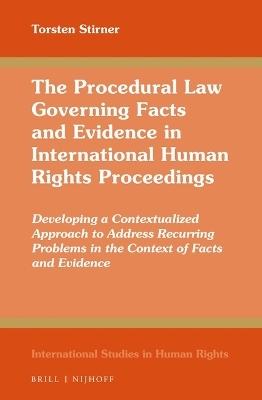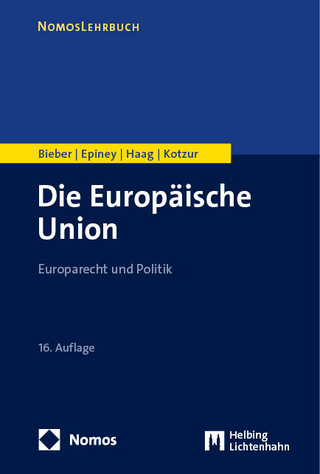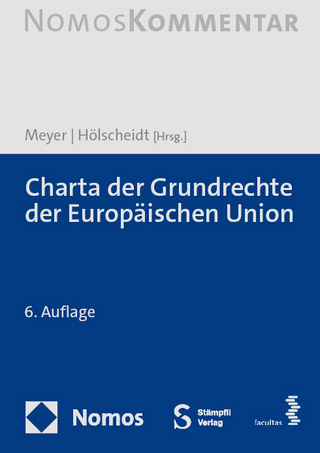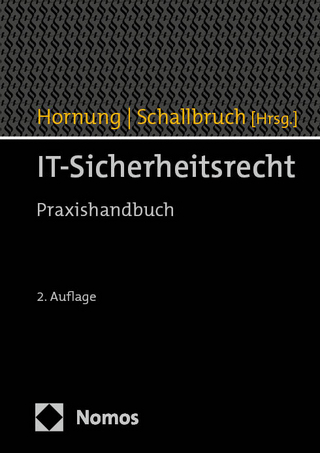
The Procedural Law Governing Facts and Evidence in International Human Rights Proceedings
Martinus Nijhoff (Verlag)
978-90-04-46312-7 (ISBN)
This book provides a comparative assessment of the procedural law governing facts and evidence with references to over 900 judgments and decisions of the European and the Inter-American Court of Human Rights as well as the UN Human Rights Committee. It identifies underlying principles which govern the procedural law of these international human rights institutions. Based on the premise of a contextualized procedural law governing facts and evidence, the book analyzes where current approaches lack a foundation in the contextualization premise and offers solutions for recurring procedural problems relating to questions of subsidiarity in fact-finding, burden and standard of proof, as well as the admissibility and evaluation of evidence.
Dr. Torsten Stirner is an attorney at a leading law firm in Germany. He was a Researcher at the Institute of International and European Law at the University of Göttingen. His publications include an edited book, Verhältnismäßigkeit im Völkerrecht (2016), as well as contributions in Law Journals.
Acknowledgments
Abbreviations
1 Introduction
1.1 Criticism Addressing the Lack of a Principled Approach
1.2 Legitimacy of the Procedural Outcomes: To Elicit a Pull towards Compliance
1.3 Developing a Standard: How to Review and Develop Procedural Law Governing Facts and Evidence
1.4 Structure of This Volume
1.5 Sources of the Law of Facts and Evidence in International Human Rights Proceedings
2 Definitions and Procedural Concepts
2.1 Standard of Proof, Evaluation of Evidence and Admission of Evidence
2.2 The Burden of Proof – The Persuasive Burden
2.3 Adversary and Investigatory Proceedings in Theory
2.4 The Evidentiary Burden, the Burden to Come Forward with Evidence and the Tactical Burden
2.5 A Shift in the Burden of Proof vs. Facilitation of Proof Such as Factual Presumptions/Prima-Facie Evidence
2.6 Fact-Finding by an International Human Rights Institution
3 Parameters of the Procedural Frameworks of International Human Rights Institutions Framing the Law Relating to Facts and Evidence
3.1 European Court of Human Rights
3.2 Inter-American Court of Human Rights
3.3 UN Human Rights Committee
3.4 Implications for the Following Analysis of the Evidentiary Process
4 Subsidiarity and the Evidentiary Procedure
4.1 Deference: The Interrelation between Subsidiarity and the Facts Established in the Domestic Proceedings
4.2 Subsidiarity: Limits to the ECtHR’s Fact-Finding and Evaluation of Evidence
4.3 Subsidiarity and Deference in the Two-Entity-System of the Inter-American System
4.4 Subsidiarity: Limits to the Committee`s Fact-Finding and Evaluation of Evidence
4.5 Summary and Problems in Need of Addressing
5 Standard of Proof in International Human Rights Proceedings
5.1 Introduction to the Concept of a Contextualized Standard of Proof
5.2 Standard of Proof in the Proceedings of the European Court of Human Rights
5.3 Standard of Proof in the Proceedings of the Inter-American Court of Human Rights
5.4 Standard of Proof in the Proceedings of the UN Human Rights Committee
5.5 Summary and Problems in Need of Addressing
6 Allocation of the Persuasive Burden in International Human Rights Proceedings
6.1 Approaches regarding the Allocation of the Persuasive Burden
6.2 Allocation of the Persuasive Burden in the Procedure before the European Court of Human Rights
6.3 Allocation of the Persuasive Burden in the Procedure before the Inter-American Court of Human Rights
6.4 Allocation of the Persuasive Burden in the Procedure before the Human Rights Committee
6.5 Summary and Problems in Need of Addressing
7 The Introduction of Facts and Evidence in the Proceedings of International Human Rights Institutions
7.1 Investigatory or Adversarial Proceedings – The Theoretical Foundation and Procedural Reality
7.2 The Introduction of Facts and Evidence in the Procedure of the ECtHR
7.3 The Introduction of Facts and Evidence in the Procedure before the Inter-American Court of Human Rights
7.4 The Introduction of Facts and Evidence in the Procedure before the U.N. Human Rights Committee
7.5 Summary and Problems in Need of Addressing
8 The Lack of Cooperation by the Respondent State
8.1 Non-Cooperation with Respect to the Establishment of the Facts and Why There Must Not Be Default Findings
8.2 Consequences of Non-Cooperation by the Respondent State – European Court of Human Rights
8.3 Consequences of Non-Cooperation – Inter-American Court of Human Rights
8.4 Consequences of Non-Cooperation – Human Rights Committee
8.5 Summary and Problems in Need of Addressing
9 The Admission of Evidence in Proceedings before Human Rights Institutions
9.1 Introduction
9.2 Admission of Evidence before the European Court of Human Rights
9.3 Admission of Evidence before the Inter-American Court of Human Rights
9.4 Admission of Evidence before the U.N. Human Rights Committee
9.5 Summary and Problems in Need of Addressing
10 The Evaluation of Evidence by the Human Rights Institutions
10.1 Introduction to the Systems of Assessing Evidence
10.2 The Evaluation of Evidence by European Court of Human Rights
10.3 The Evaluation of Evidence by the Inter-American Court of Human Rights
10.4 The Evaluation of Evidence by the UN Human Rights Committee
10.5 Summary and Problems in Need of Addressing
11 Rationalizing and Advancing the Law Governing Facts and Evidence on the Basis of a Sui-Generis, Contextualized Approach
11.1 Subsidiarity and the Law Governing Facts and Evidence
11.2 Proposal for a Contextualized Standard of Proof
11.3 The Persuasive Burden and Its Link to the Substantive Law
11.4 Fact-Finding and Facts and Evidence Presented by the Parties, Factual Presumptions and Tactical Burden
11.5 Consequences of Non-Cooperation
11.6 Admission and Evaluation of Evidence
Bibliography
Index
| Erscheinungsdatum | 19.07.2021 |
|---|---|
| Reihe/Serie | International Studies in Human Rights ; 137 |
| Sprache | englisch |
| Maße | 155 x 235 mm |
| Gewicht | 989 g |
| Themenwelt | Recht / Steuern ► EU / Internationales Recht |
| Recht / Steuern ► Öffentliches Recht ► Völkerrecht | |
| ISBN-10 | 90-04-46312-7 / 9004463127 |
| ISBN-13 | 978-90-04-46312-7 / 9789004463127 |
| Zustand | Neuware |
| Informationen gemäß Produktsicherheitsverordnung (GPSR) | |
| Haben Sie eine Frage zum Produkt? |
aus dem Bereich


